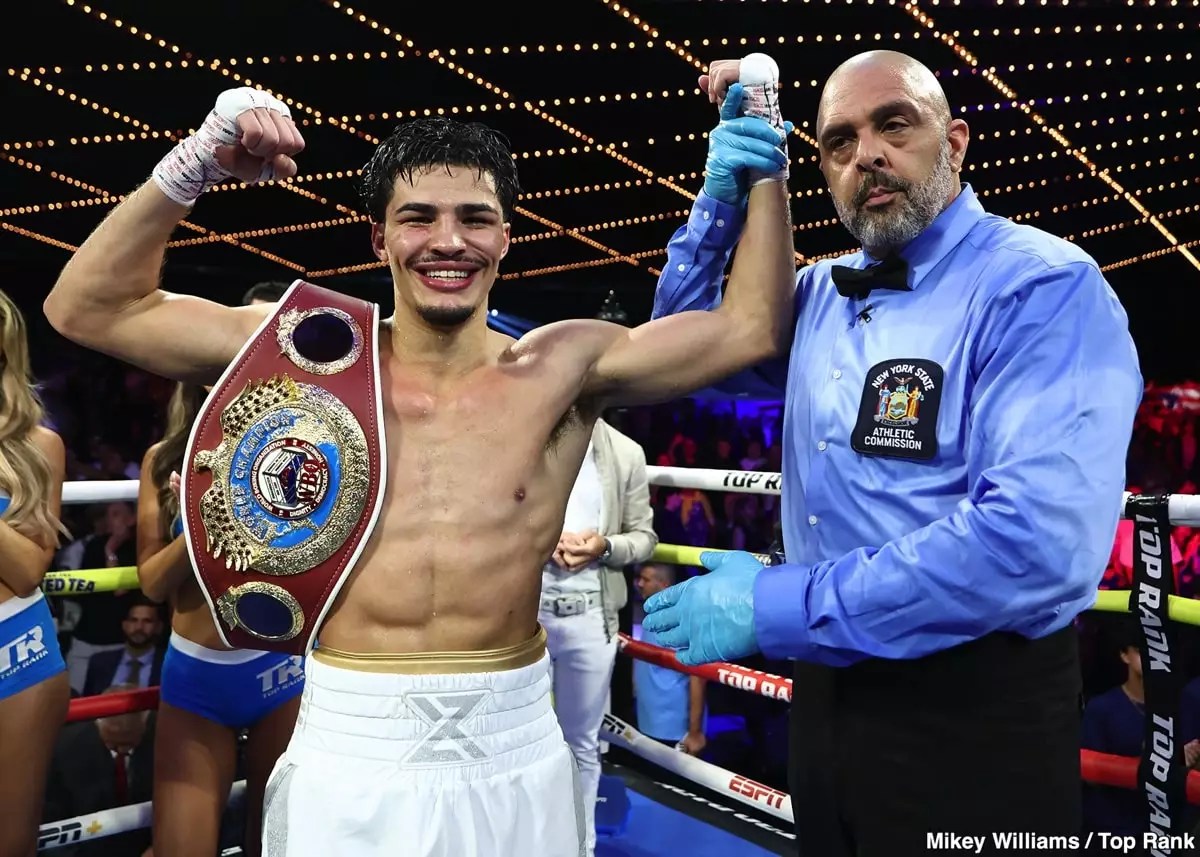The recent social media spat between Xander Zayas and Vergil Ortiz Jr. illuminates more than just a heated exchange; it reveals a deeper narrative about the shifting power dynamics within boxing’s junior middleweight landscape. At merely 22 years old, Zayas has rapidly ascended the rankings, claiming a hefty piece of the prize in his latest victory. Meanwhile, Ortiz, ten years his senior, has yet to demonstrate the same level of accomplishment on the world stage, despite his undeniable talent and backing from Golden Boy Promotions. This clash is less about petty bravado and more about contrasting career trajectories, strategic planning, and perceptions of achievement in an unforgiving sport.
The Symbolism of Youth Versus Experience
Zayas’s victory, captured decisively, represents a well-orchestrated career move. It shines a spotlight on how fighters at this stage can be curated into favorable matchups, often leaning more on management strategies and sanctioning body maneuvering than true merit. His current status as a WBO interim champion is a testament to top-tier promotional planning, positioning him advantageously for future unification bouts. Compared to Ortiz, who has yet to fight for a proper world title, Zayas embodies the emerging new guard — young, ambitious, and brilliantly guided. Nonetheless, Ortiz’s dismissive attitude—calling Zayas “food”—raises questions about experience and humility; fighters often underestimate their adversaries until they face real challenges.
The Reality of Career Progression and the Power Play
Ortiz’s comments expose an interesting truth: in boxing, achievement is often dictated by strategic promotion and regulatory navigation rather than raw talent alone. Ortiz, despite his reputation as a power puncher and a highly anticipated prospect, has not capitalized on that potential with a decisive world-title victory. Conversely, Zayas’s path was carefully sculpted, maneuvering him into a position where a title was attainable. This strategic orchestration leaves seasoned fans pondering whether Ortiz’s dismissiveness is a sign of arrogance or frustration, especially considering his underwhelming record of title shots.
Implications for the Future of the Division
The rivalry encapsulates a broader dialogue about meritocracy and the true measure of success in boxing. Does winning a title after advantageous matchmaking equate to dominance? Or does genuine accomplishment require overcoming the most formidable opponents? Zayas’s supporters tout his fresh approach and strategic ascent, while critics might argue his resume lacks the requisite battles with top-tier contenders. Ortiz, on the other hand, has yet to showcase his full potential in a high-pressure environment, and his bravado may be veiling doubts about his readiness. As fans and analysts dissect this feud, it’s clear that the trajectory of both fighters will influence the division’s future landscape—either elevating it with compelling matchups or exposing its fragility to managerial manipulation.
Final Thoughts: A Battle Beyond the Ring
This fiery exchange highlights the complex layers of ambition, perception, and strategy that define modern boxing. While Zayas’s swift ascension may seem premature or strategically lucky, it underscores how modern fighters are often shaped by tactical promotion rather than pure boxing prowess alone. Ortiz’s reaction, meanwhile, reveals the impatience and frustration of a veteran trying to protect his legacy. Ultimately, the true test lies ahead: can Ortiz translate raw power into tangible victories against top-tier opponents? Or will Zayas continue to leverage his youth and carefully crafted opportunities into long-term domination? As the divisions stir with this rivalry, one thing is certain—boxing’s heart beats strongest when these stories of clash and resilience unfold in the ring.

